Oxidative damage and delayed replication allow viable Mycobacterium tuberculosis to go undetected
- PMID: 34818059
- PMCID: PMC8903021
- DOI: 10.1126/scitranslmed.abg2612
Oxidative damage and delayed replication allow viable Mycobacterium tuberculosis to go undetected
Abstract
“Viable but nonculturable” states of bacteria pose challenges for environmental and clinical microbiology, but their biological mechanisms remain obscure. Mycobacterium tuberculosis (Mtb), the leading cause of death from infection until the coronavirus disease 2019 pandemic, affords a notable example of this phenotype. Mtb can enter into a “differentially detectable” (DD) state associated with phenotypic antimicrobial resistance. In this state, Mtb cells are viable but undetectable as colony-forming units. We found that Mtb cells enter the DD state when they undergo sublethal oxidative stress that damages their DNA, proteins, and lipids. In addition, their replication process is delayed, allowing time for repair. Mycobacterium bovis and its derivative, BCG, fail to enter the DD state under similar conditions. These findings have implications for tuberculosis latency, detection, relapse, treatment monitoring, and development of regimens that overcome phenotypic antimicrobial resistance.
Conflict of interest statement
Declaration of Interests
CN serves on advisory bodies for Tres Cantos Open Lab Foundation, Tri-Institutional Therapeutics Discovery Institute, Bridge Medicines, Pfizer External Sciences and Innovation, and Leap Therapeutics. All other authors declare no conflicts of interest related to this work.
Figures
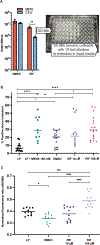
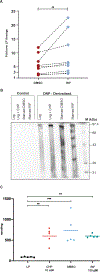
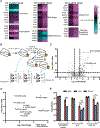
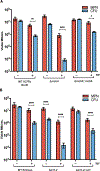

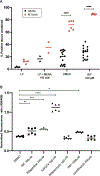
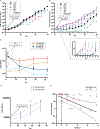

Similar articles
-
Generation of Liposomes to Study the Effect of Mycobacterium Tuberculosis Lipids on HIV-1 cis- and trans-Infections.Int J Mol Sci. 2021 Feb 16;22(4):1945. doi: 10.3390/ijms22041945. Int J Mol Sci. 2021. PMID: 33669411 Free PMC article.
-
Rifamycin action on RNA polymerase in antibiotic-tolerant Mycobacterium tuberculosis results in differentially detectable populations.Proc Natl Acad Sci U S A. 2017 Jun 13;114(24):E4832-E4840. doi: 10.1073/pnas.1705385114. Epub 2017 May 30. Proc Natl Acad Sci U S A. 2017. PMID: 28559332 Free PMC article.
-
Differentially Detectable Mycobacterium tuberculosis Cells in Sputum from Treatment-Naive Subjects in Haiti and Their Proportionate Increase after Initiation of Treatment.mBio. 2018 Nov 20;9(6):e02192-18. doi: 10.1128/mBio.02192-18. mBio. 2018. PMID: 30459198 Free PMC article.
-
Natural and trained innate immunity against Mycobacterium tuberculosis.Immunobiology. 2020 May;225(3):151951. doi: 10.1016/j.imbio.2020.151951. Epub 2020 Apr 27. Immunobiology. 2020. PMID: 32423788 Review.
-
Systematic Review of Pooling Sputum as an Efficient Method for Xpert MTB/RIF Tuberculosis Testing during the COVID-19 Pandemic.Emerg Infect Dis. 2021 Mar;27(3):719-727. doi: 10.3201/eid2703.204090. Emerg Infect Dis. 2021. PMID: 33622482 Free PMC article.
Cited by
-
Central carbon metabolism remodeling as a mechanism to develop drug tolerance and drug resistance in Mycobacterium tuberculosis.Front Cell Infect Microbiol. 2022 Aug 22;12:958240. doi: 10.3389/fcimb.2022.958240. eCollection 2022. Front Cell Infect Microbiol. 2022. PMID: 36072228 Free PMC article. Review.
-
Drug-induced differential culturability in diverse strains of Mycobacterium tuberculosis.Sci Rep. 2025 Jan 28;15(1):3588. doi: 10.1038/s41598-024-85092-7. Sci Rep. 2025. PMID: 39875469 Free PMC article.
-
Trehalose catalytic shift is an intrinsic factor in Mycobacterium tuberculosis that enhances phenotypic heterogeneity and multidrug resistance.Res Sq [Preprint]. 2024 Sep 13:rs.3.rs-4999164. doi: 10.21203/rs.3.rs-4999164/v1. Res Sq. 2024. Update in: Nat Commun. 2025 Jul 11;16(1):6442. doi: 10.1038/s41467-025-61703-3. PMID: 39315249 Free PMC article. Updated. Preprint.
-
Intracellular persister: A stealth agent recalcitrant to antibiotics.Front Cell Infect Microbiol. 2023 Mar 31;13:1141868. doi: 10.3389/fcimb.2023.1141868. eCollection 2023. Front Cell Infect Microbiol. 2023. PMID: 37065203 Free PMC article. Review.
-
Clinically encountered growth phenotypes of tuberculosis-causing bacilli and their in vitro study: A review.Front Cell Infect Microbiol. 2022 Nov 10;12:1029111. doi: 10.3389/fcimb.2022.1029111. eCollection 2022. Front Cell Infect Microbiol. 2022. PMID: 36439231 Free PMC article. Review.
References
-
- Global tuberculosis report 2020 (World Health Organization, Geneva, Switzerland, 2020).
-
- Merle CS, Fielding K, Sow OB, Gninafon M, Lo MB, Mthiyane T, Odhiambo J, Amukoye E, Bah B, Kassa F, N’Diaye A, Rustomjee R, de Jong BC, Horton J, Perronne C, Sismanidis C, Lapujade O, Olliaro PL, Lienhardt C, A four-month gatifloxacin-containing regimen for treating tuberculosis. New England Journal of Medicine 371, 1588–1598 (2014). - PubMed
Publication types
MeSH terms
Grants and funding
LinkOut - more resources
Full Text Sources
Medical
Molecular Biology Databases

